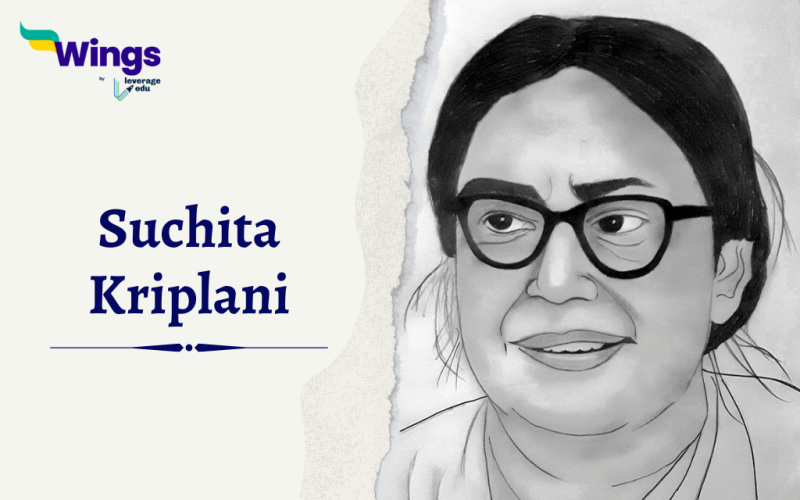Sucheta Kripalani ( 25 June 1908–1 December 1974) was an Indian freedom fighter and politician. She was India’s first female Chief Minister, leading the Uttar Pradesh government from 1963 to 1967. Read this blog to learn more about Sucheta Kriplani, her early life, and her contributions to the Indian freedom movement.
| Overview Table Of Sucheta Kriplani | |
| Born | June 25, 1908 |
| Place of Birth | Ambala district, Haryana, India |
| Father | Surendranath Majumdar (government doctor and patriot) |
| Education | Undergraduate – Indraprastha College, New Delhi |
| Masters – St. Stephen’s College, Delhi | |
| Lecturer – Constitutional History, Banaras Hindu University | |
| Spouse | J. B. Kripalani (a prominent member of the Indian National Congress) |
| Significance | Freedom fighter |
| Member of the Constituent Assembly that drafted the Indian Constitution | |
| First woman Chief Minister of Uttar Pradesh (1963-1967) | |
| Founder of All India Mahila Congress (1940) | |
| Contributions | Actively participated in the 1942 Quit India Movement. |
| Worked underground to evade arrest | |
| Detained for a year after being captured | |
Sucheta Kriplani’s Early Life
Sucheta Kriplani was born in Punjab, Ambala District, into a Bengali family.
- Her father, Surendranath Majumdar, worked as a medical officer, which required frequent transfers. As a result, she attended a number of schools,
- She completed her final Master’s degree in history from St. Stephens College, New Delhi.
- She attended Indraprastha College and Punjab University before becoming a constitutional history professor at Banaras Hindu University.
Also read: Who was Sir George Barlow?

After getting married, Sucheta joined the Indian National Congress. During the Quit India Movement in 1942, she worked with Aruna Asaf Ali and other women leaders. She became the first leader of the Women’s Wing of the Congress Party.
A fascinating story about Sucheta is that she always carried cyanide capsules with her. According to the book ‘Great Woman of Modern India’, these capsules were for her safety. In 1946, there were severe communal riots in Noakhali (now Bangladesh). Along with Gandhiji and her husband JB Kripalani, Sucheta went to these areas affected by the riots. It’s reported that women there faced many abuses, which is why Sucheta carried the cyanide capsules.
Kripalani was very active and significantly involved in the fight for India’s independence in the 1940s. This included her role in the 1942 Quit India Movement, where she managed to avoid arrest but was eventually caught in 1944 and spent a year in jail.
Also Read – The Heroic Role of Women in India’s Freedom Struggle
Sucheta Kriplani’s Life After Independence
| Post-Independence life of Sucheta Kriplani | |
| Political Party | KMPP (1952) – Founded by her husband, J.B. Kripalani |
| Congress Party (1957-1969) | |
| NCO (1969-1971) | |
| Parliamentary Positions | Member of Lok Sabha (1952-1956, 1957-1962, 1967) |
| Member of Uttar Pradesh Legislative Assembly | |
| Ministerial Positions | Minister of Labour, Community Development and Industry, Uttar Pradesh (1960-1963) |
| Landmark Achievement | She became the first female Chief Minister of Uttar Pradesh |
| Other Activities | Advocated for women’s education – free school fees for girls up to Class 10 in UP |
| Later Years | She retired from politics in 1971 |
| Death | Died in 1974 |
FAQs
Sucheta Kriplani was born on June 25, 1908, in Ambala district, Haryana, India.
She was India’s first female Chief Minister, leading Uttar Pradesh from 1963 to 1967.
She actively participated in the Quit India Movement (1942) and was a member of the Constituent Assembly that drafted the Indian Constitution.
Relevant Blogs
If you want to know more about other Famous Personalities then visit our General Knowledge page!
 One app for all your study abroad needs
One app for all your study abroad needs













